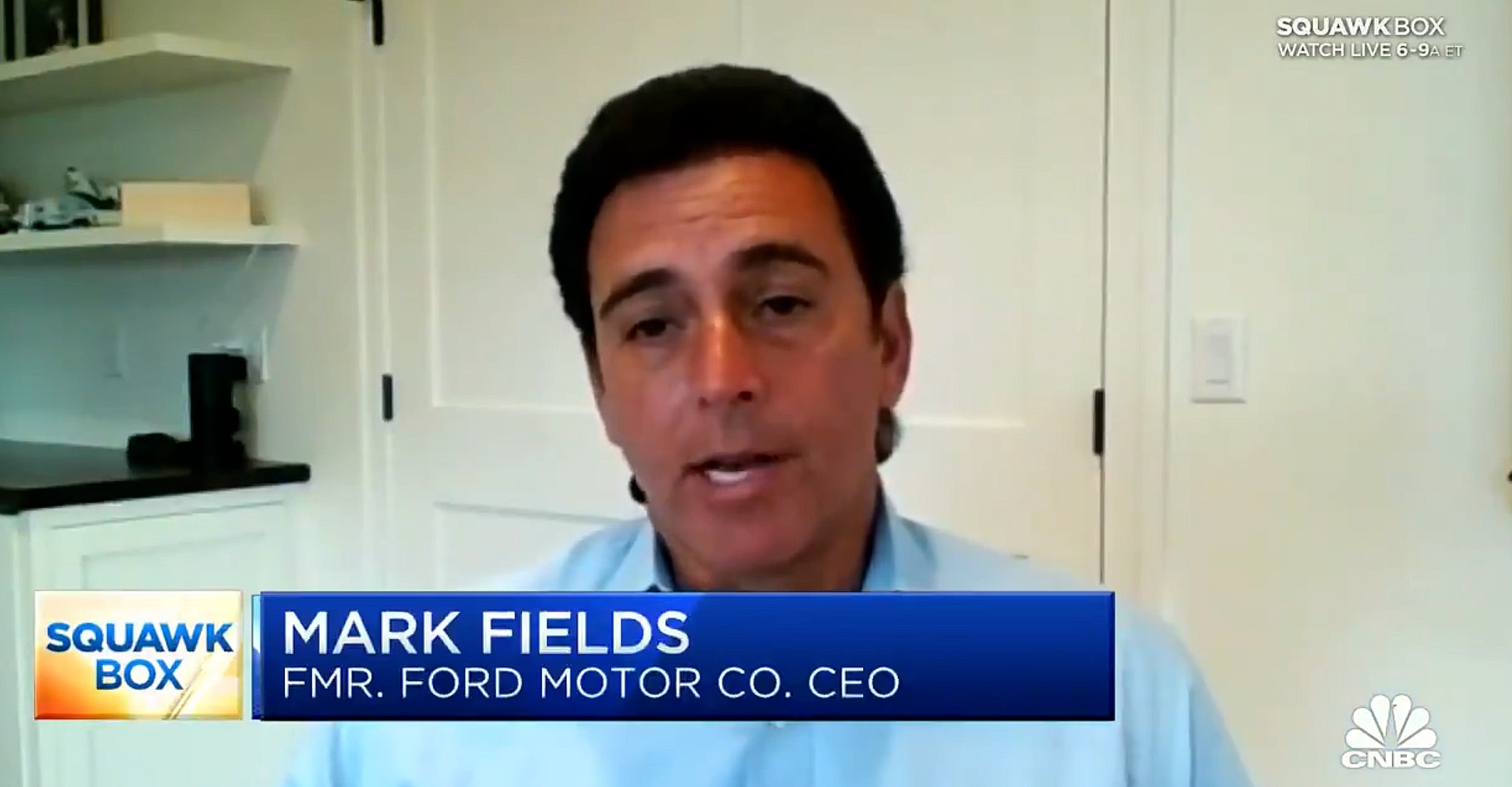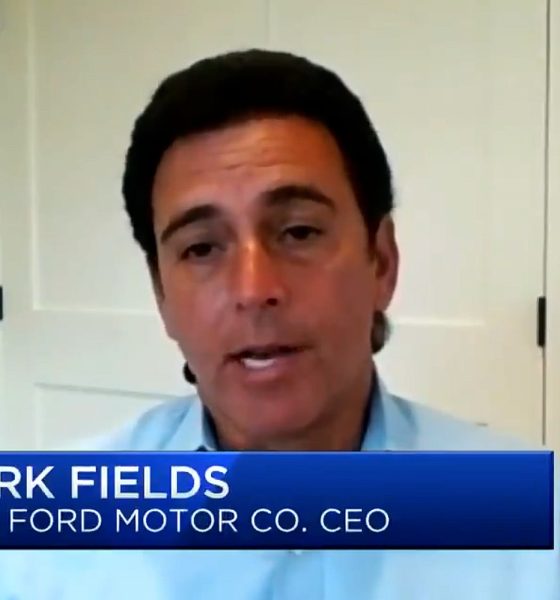

News
Former Ford CEO hammers Tesla’s Autopilot probe: ‘It’s half the vehicles Tesla has ever built’
Former Ford CEO Mark Fields hammered Tesla’s Autopilot probe from the NHTSA earlier today on an episode of CNBC’s Squawk Box, stating that over half of the cars the automaker has ever built are involved in the investigation.
Earlier this week, it was announced the NHTSA was launching a probe into the Autopilot system Tesla has equipped on its vehicles. The investigation involves all four of Tesla’s models from year 2014 to 2021, as it aligns with the specifications that the NHTSA’s Office of Defects Investigation listed in its preliminary report. In total, some 765,000 vehicles are going to be a part of the investigation, although only 11 crashes are listed on the document, which the agency shared with Teslarati.
“The Office of Defects Investigation (ODI) has identified eleven crashes in which Tesla models of various configurations have encountered first responder scenes and subsequently struck one or more vehicles involved with those scenes,” it says.
Fmr. Ford CEO Fields: “It’s literally over half of the vehicles Tesla has ever built.”
Mark Fields, who was CEO of Ford Motor Company from 2014 to 2017, appeared on CNBC this morning to talk about the probe. “This is a significant investigation,” he said. However, Fields misidentifies which Tesla semi-autonomous driving suite is actually under investigation, as he claims it is the Full Self-Driving package. FSD is significantly different than Autopilot based on features and functionality alone, and the NHTSA never mentions the Full Self-Driving suite at any point in its document.
Fields points toward the population density of the investigation as a telltale sign that this could be bad news for Tesla, as over half of its produced vehicles could be subjected to a massive recall that could cost the automaker billions of dollars. Tesla surpassed the 1 million production mark in 2020 and is nearing the 2 million vehicle mark this year.
“If you look at the model years, this is a very large time period they’re investigating: 2014-2021. If you look at the number of potentially affected vehicles, it’s …. literally over half of the vehicles $TSLA has ever built,” auto exec Mark Fields on the NHTSA investigation. pic.twitter.com/kwcUT5Jd47
— Squawk Box (@SquawkCNBC) August 17, 2021
The investigation does focus on a larger than half portion of Tesla’s production population in its short history. However, it is worth noting that the company did not mass produce vehicles until 2017 with the introduction of the Model 3. Additionally, Autopilot is available on all Tesla vehicles and was included as a standard feature in March 2019. Full Self-Driving is not a part of this investigation, and is a separate $10,000 charge on top of the vehicle’s purchase price but is completely optional.
Fields said that the investigation could take between a year and a year and a half based on his knowledge of the NHTSA investigation process. If the NHTSA concludes the Autopilot functionality is not up to its standards, it can issue a recall, Fields added.
The 11 Accidents: a Breakdown
According to the NHTSA documents, the 11 incidents involving a Tesla occurred when the vehicles collided with first responders. However, several investigations have already shown that drivers operating the vehicles in some of the incidents were under the influence of drugs or alcohol (2), had suspended licenses (1), were not following instructions that Tesla outlines for Autopilot use, or was caused by driver inattention (4).
In February 2021, a Tesla driver injured five deputy constables when the vehicle collided with a police cruiser, causing a chain collision. The driver was arrested on suspicion of DWI.
In March 2021, a driver in Lansing, Michigan, with a suspended license, crashed into a police cruiser. The vehicle was operating on Autopilot, but the driver was illegally operating the vehicle.
These are just two examples of what the accidents were caused by, and drivers could be blamed for several instances that the NHTSA lists. Autopilot has been one of the safest ways to operate a motor vehicle, according to statistics from Tesla that showed there was one accident every 4.19 million miles in which drivers had Autopilot engaged. The national average was one crash every 484,000 miles.

News
Man credits Grok AI with saving his life after ER missed near-ruptured appendix
The AI flagged some of the man’s symptoms and urged him to return to the ER immediately and demand a CT scan.

A 49-year-old man has stated that xAI’s Grok ended up saving his life when the large language model identified a near-ruptured appendix that his first ER visit dismissed as acid reflux.
After being sent home from the ER, the man asked Grok to analyze his symptoms. The AI flagged some of the man’s symptoms and urged him to return immediately and demand a CT scan. The scan confirmed that something far worse than acid reflux was indeed going on.
Grok spotted what a doctor missed
In a post on Reddit, u/Tykjen noted that for 24 hours straight, he had a constant “razor-blade-level” abdominal pain that forced him into a fetal position. He had no fever or visible signs. He went to the ER, where a doctor pressed his soft belly, prescribed acid blockers, and sent him home.
The acid blockers didn’t work, and the man’s pain remained intense. He then decided to open a year-long chat he had with Grok and listed every detail that he was experiencing. The AI responded quickly. “Grok immediately flagged perforated ulcer or atypical appendicitis, told me the exact red-flag pattern I was describing, and basically said “go back right now and ask for a CT,” the man wrote in his post.
He copied Grok’s reasoning, returned to the ER, and insisted on the scan. The CT scan ultimately showed an inflamed appendix on the verge of rupture. Six hours later, the appendix was out. The man said the pain has completely vanished, and he woke up laughing under anesthesia. He was discharged the next day.
How a late-night conversation with Grok got me to demand the CT scan that saved my life from a ruptured appendix (December 2025)
byu/Tykjen ingrok
AI doctors could very well be welcomed
In the replies to his Reddit post, u/Tykjen further explained that he specifically avoided telling doctors that Grok, an AI, suggested he get a CT scan. “I did not tell them on the second visit that Grok recommended the CT scan. I had to lie. I told them my sister who’s a nurse told me to ask for the scan,” the man wrote.
One commenter noted that the use of AI in medicine will likely be welcomed, stating that “If AI could take doctors’ jobs one day, I will be happy. Doctors just don’t care anymore. It’s all a paycheck.” The Redditor replied with, “Sadly yes. That is what it felt like after the first visit. And the following night could have been my last.”
Elon Musk has been very optimistic about the potential of robots like Tesla Optimus in the medical field. Provided that they are able to achieve human-level articulation in their hands, and Tesla is able to bring down their cost through mass manufacturing, the era of AI-powered medical care could very well be closer than expected.
News
Tesla expands Model 3 lineup in Europe with most affordable variant yet
The Model 3 Standard still delivers more than 300 miles of range, potentially making it an attractive option for budget-conscious buyers.

Tesla has introduced a lower-priced Model 3 variant in Europe, expanding the lineup just two months after the vehicle’s U.S. debut. The Model 3 Standard still delivers more than 300 miles (480 km) of range, potentially making it an attractive option for budget-conscious buyers.
Tesla’s pricing strategy
The Model 3 Standard arrives as Tesla contends with declining registrations in several countries across Europe, where sales have not fully offset shifting consumer preferences. Many buyers have turned to options such as Volkswagen’s ID.3 and BYD’s Atto 3, both of which have benefited from aggressive pricing.
By removing select premium finishes and features, Tesla positioned the new Model 3 Standard as an “ultra-low cost of ownership” option of its all-electric sedan. Pricing comes in at €37,970 in Germany, NOK 330,056 in Norway, and SEK 449,990 in Sweden, depending on market. This places the Model 3 Standard well below the “premium” Model 3 trim, which starts at €45,970 in Germany.
Deliveries for the Standard model are expected to begin in the first quarter of 2026, giving Tesla an entry-level foothold in a segment that’s increasingly defined by sub-€40,000 offerings.
Tesla’s affordable vehicle push
The low-cost Model 3 follows October’s launch of a similarly positioned Model Y variant, signaling a broader shift in Tesla’s product strategy. While CEO Elon Musk has moved the company toward AI-driven initiatives such as robotaxis and humanoid robots, lower-priced vehicles remain necessary to support the company’s revenue in the near term.
Reports have indicated that Tesla previously abandoned plans for an all-new $25,000 EV, with the company opting to create cheaper versions of existing platforms instead. Analysts have flagged possible cannibalization of higher-margin models, but the move aims to counter an influx of aggressively priced entrants from China and Europe, many of which sell below $30,000. With the new Model 3 Standard, Tesla is reinforcing its volume strategy in Europe’s increasingly competitive EV landscape.
News
Tesla FSD (Supervised) stuns Germany’s biggest car magazine
FSD Supervised recognized construction zones, braked early for pedestrians, and yielded politely on narrow streets.

Tesla’s upcoming FSD Supervised system, set for a European debut pending regulatory approval, is showing notably refined behavior in real-world testing, including construction zones, pedestrian detection, and lane changes, as per a recent demonstration ride in Berlin.
While the system still required driver oversight, its smooth braking, steering, and decision-making illustrated how far Tesla’s driver-assistance technology has advanced ahead of a potential 2026 rollout.
FSD’s maturity in dense city driving
During the Berlin test ride with Auto Bild, Germany’s largest automotive publication, a Tesla Model 3 running FSD handled complex traffic with minimal intervention, autonomously managing braking, acceleration, steering, and overtaking up to 140 km/h. It recognized construction zones, braked early for pedestrians, and yielded politely on narrow streets.
Only one manual override was required when the system misread a converted one-way route, an example, Tesla stated, of the continuous learning baked into its vision-based architecture.
Robin Hornig of Auto Bild summed up his experience with FSD Supervised with a glowing review of the system. As per the reporter, FSD Supervised already exceeds humans with its all-around vision. “Tesla FSD Supervised sees more than I do. It doesn’t get distracted and never gets tired. I like to think I’m a good driver, but I can’t match this system’s all-around vision. It’s at its best when both work together: my experience and the Tesla’s constant attention,” the journalist wrote.
Tesla FSD in Europe
FSD Supervised is still a driver-assistance system rather than autonomous driving. Still, Auto Bild noted that Tesla’s 360-degree camera suite, constant monitoring, and high computing power mark a sizable leap from earlier iterations. Already active in the U.S., China, and several other regions, the system is currently navigating Europe’s approval pipeline. Tesla has applied for an exemption in the Netherlands, aiming to launch the feature through a free software update as early as February 2026.
What Tesla demonstrated in Berlin mirrors capabilities already common in China and the U.S., where rival automakers have rolled out hands-free or city-navigation systems. Europe, however, remains behind due to a stricter certification environment, though Tesla is currently hard at work pushing for FSD Supervised’s approval in several countries in the region.








